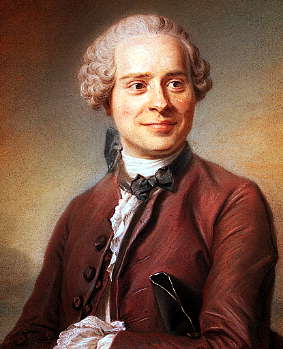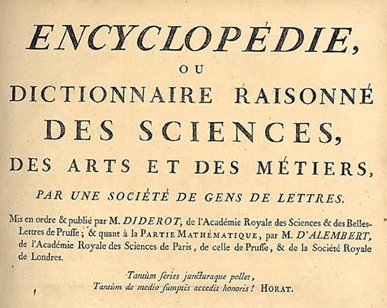Great geophysicists #8: d'Alembert
/ Jean-Baptiste le Rond d'Alembert was a French mathematician, born on 16 or 17 November 1717 in Paris, and died on 29 October 1783, also in Paris. His father was an artillery officer, but his mother was much more interesting. Having been a nun, she sought papal dispensation in 1714 for a new career as a fun-loving socialite, benefiting from the new government banknote printing scheme of John Law. She left her illegitimate child on the steps of Église St Jean Le Rond de Paris, whence he was taken to an orphanage. When his father returned from duty, he arranged for the boy's care.
Jean-Baptiste le Rond d'Alembert was a French mathematician, born on 16 or 17 November 1717 in Paris, and died on 29 October 1783, also in Paris. His father was an artillery officer, but his mother was much more interesting. Having been a nun, she sought papal dispensation in 1714 for a new career as a fun-loving socialite, benefiting from the new government banknote printing scheme of John Law. She left her illegitimate child on the steps of Église St Jean Le Rond de Paris, whence he was taken to an orphanage. When his father returned from duty, he arranged for the boy's care.
 Perhaps d'Alembert's greatest contribution to the world was helping Denis Diderot 'change the way people think' by editing the great Encyclopédie, ou Dictionnaire raisonné des sciences, des arts et des métiers of 1751. There were many contributors, but d'Alembert was listed as co-editor on the title page (left). This book was an essential ingredient in spreading the Enlightenment across Europe, and d'Alembert was closely involved in the project for at least a decade.
Perhaps d'Alembert's greatest contribution to the world was helping Denis Diderot 'change the way people think' by editing the great Encyclopédie, ou Dictionnaire raisonné des sciences, des arts et des métiers of 1751. There were many contributors, but d'Alembert was listed as co-editor on the title page (left). This book was an essential ingredient in spreading the Enlightenment across Europe, and d'Alembert was closely involved in the project for at least a decade.
But that's not why he's in our list of great geophysicists. As I mentioned when I wrote about Euler, d'Alembert substantially progressed the understanding of waves, making his biggest breakthrough in 1747 in his work on vibrating strings. His paper was the first time the wave equation or its solution had appeared in print:

Though Euler and d'Alembert corresponded on waves and other matters, and strongly influenced each other, they eventually fell out. For example, Euler wrote to Lagrange in 1759:
d'Alembert has tried to undermine [my solution to the vibrating strings problem] by various cavils, and that for the sole reason that he did not get it himself... He thinks he can deceive the semi-learned by his eloquence. I doubt whether he is serious, unless perhaps he is thoroughly blinded by self-love. [See Morris Kline, 1972]
D'Alembert did little mathematics after 1760, as he became more involved in other academic matters. Later, ill health gradually took over. He lamented to Lagrange (evidently an Enlightenment agony aunt) in 1777, six years before his death:
What annoys me the most is the fact that geometry, which is the only occupation that truly interests me, is the one thing that I cannot do. [See Thomas Hankins, 1970]
I imagine he died feeling a little hollow about his work on waves, unaware of the future impact it would have—not just in applied geophysics, but in communication, medicine, engineering, and so on. For solving the wave equation, d'Alembert, we salute you.
References
Read more on Wikipedia and The MacTutor History of Mathematics.
D'Alembert, J-B (1747). Recherches sur la courbe que forme une corde tenduë mise en vibration. (Researches on the curve that a tense cord forms [when] set into vibration.) Histoire de l'académie royale des sciences et belles lettres de Berlin, vol. 3, pages 214–219. Read on Google Books, with its sister paper, 'Further researches...'.
Portrait is a pastel by Maurice Quentin de La Tour, 1704–88.









 Except where noted, this content is licensed
Except where noted, this content is licensed